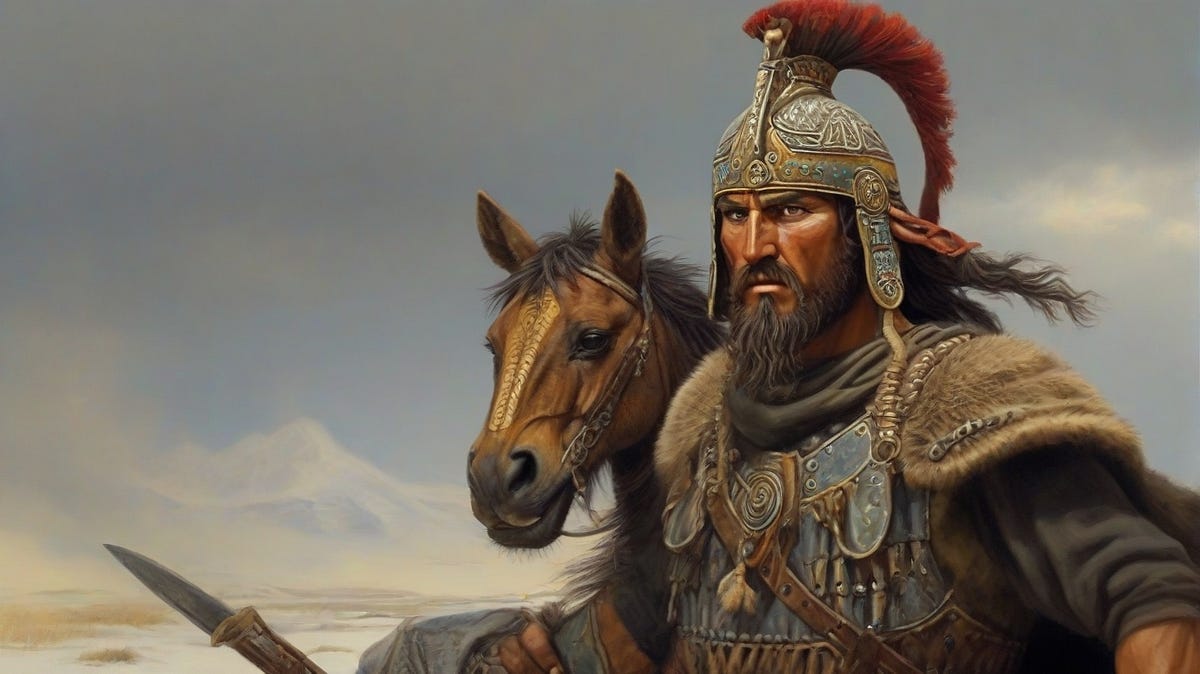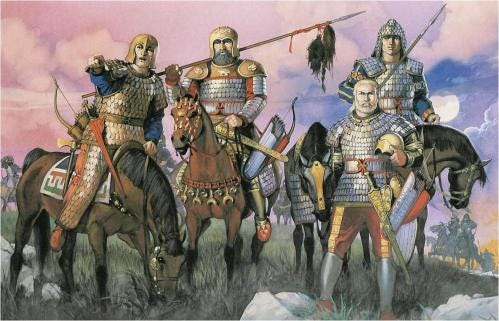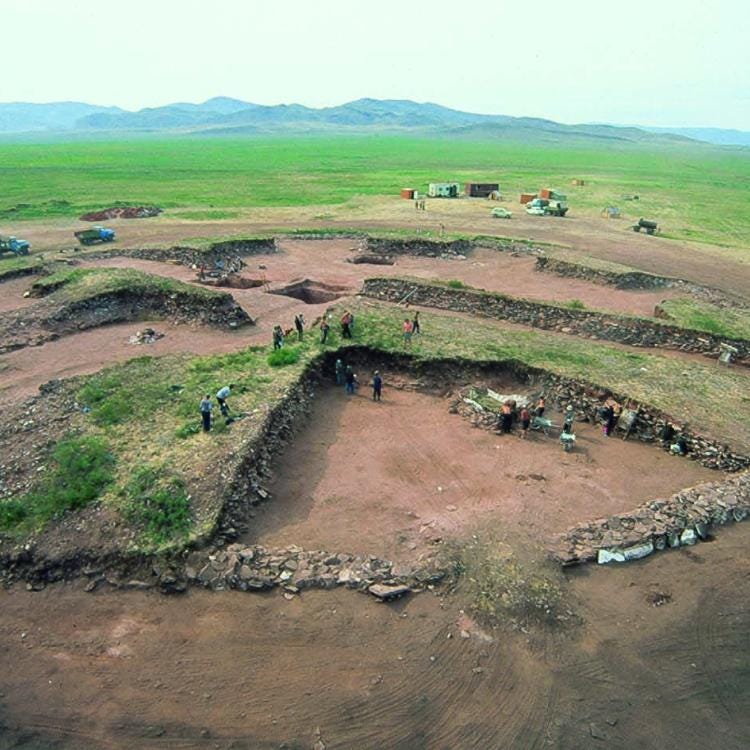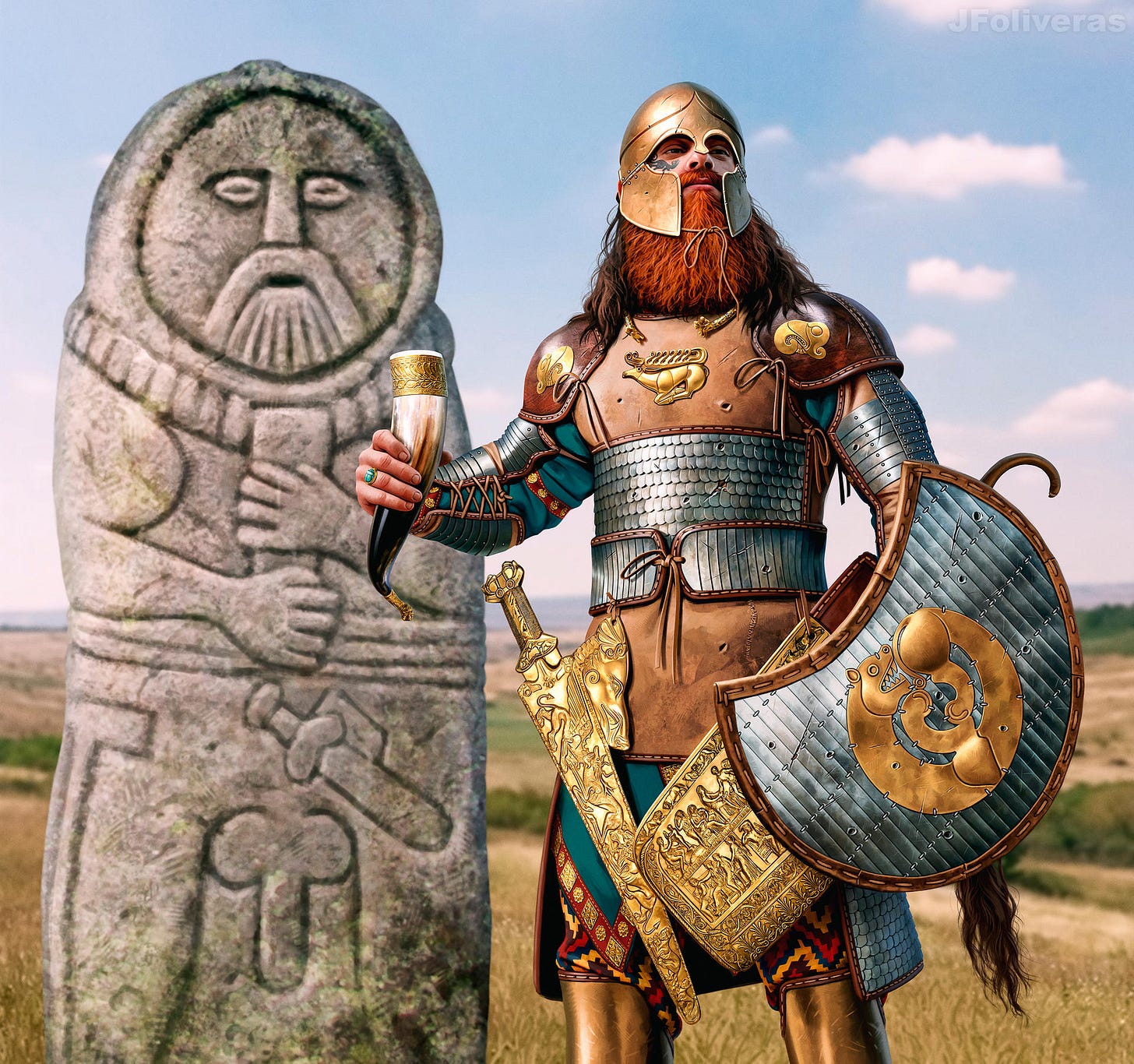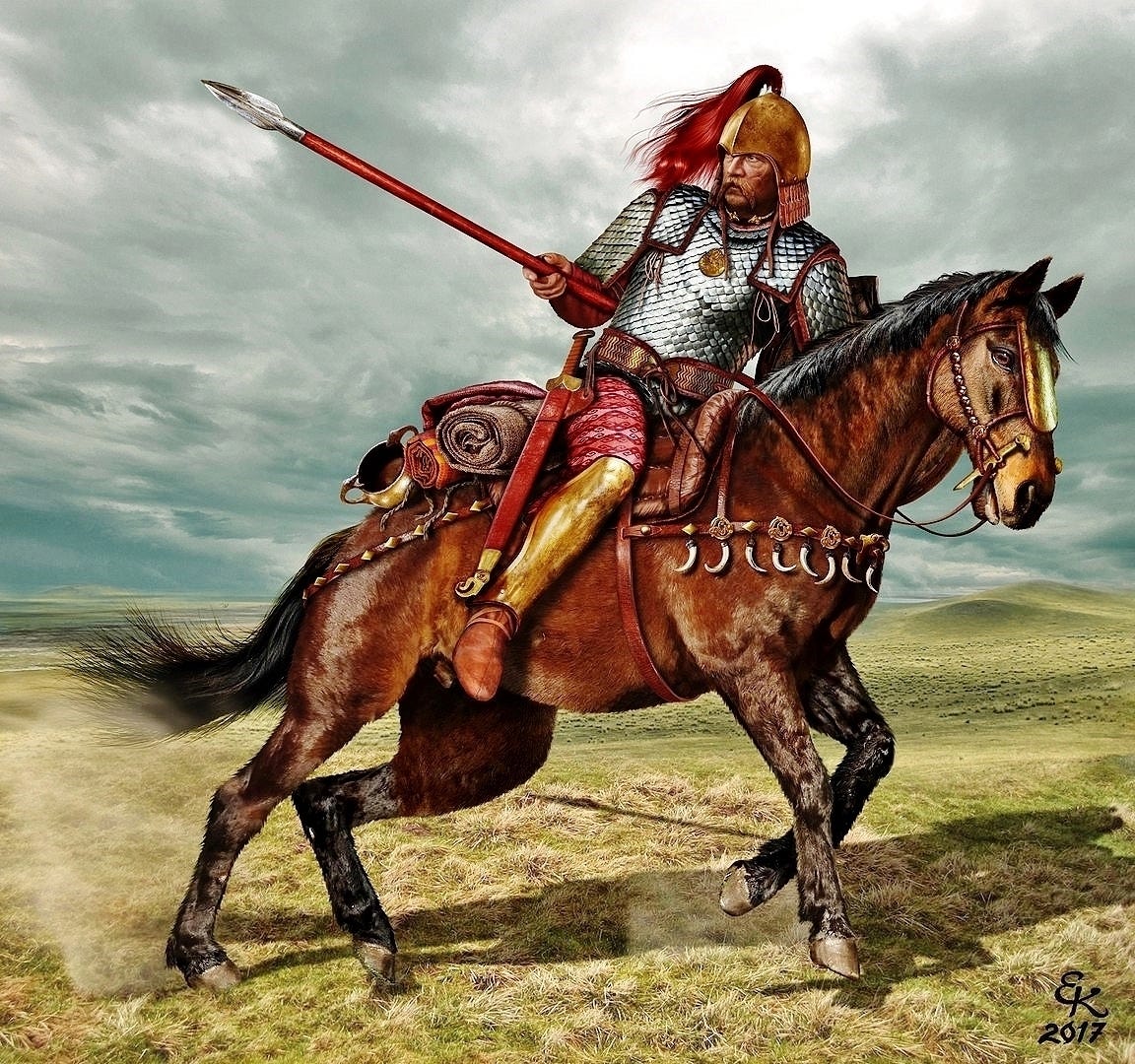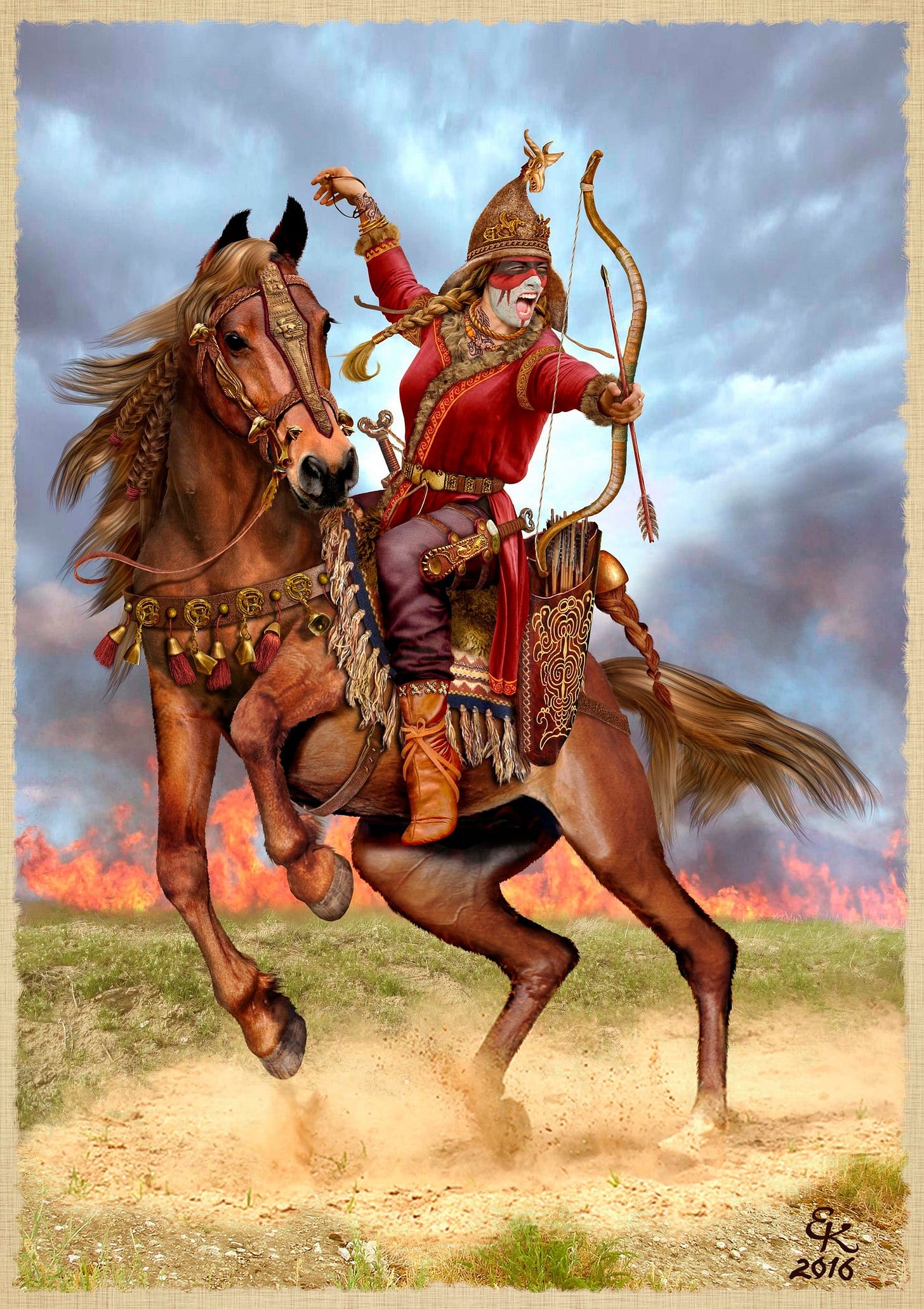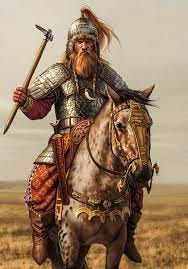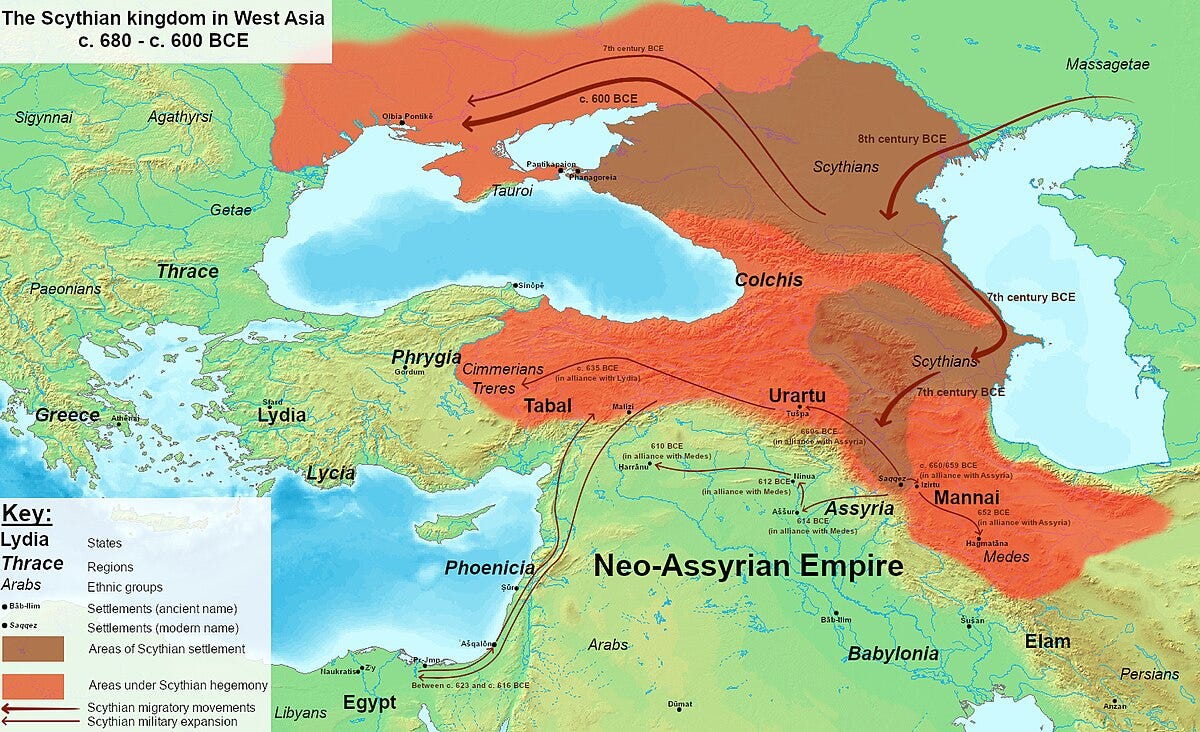Hello Dear Reader,
I bid you a warm greeting on this fine day where we will be discussing a fascinating ancient people who conquered the Steppe. Renowned for their exceptional equestrian skills and mastery of archery, today we discuss those who would become The Bane of the Steppe. They would be some of the first horse lords and formally named as the Scythians. So come, dear reader, take a seat around my fire and let’s begin. The vast Steppe stretches before us and all that can be heard in the distance is the thunder of hooves coming towards us.
Lords of the Horse
For some general context, the Scythians were a highly mobile, Iranian nomadic people who thrived across the vast steppes of Eurasia from the 7th century B.C. to the 3rd century B.C. Renowned for their intricate culture and exceptional skills in mounted warfare, they were among the first to master the art of archery on horseback, allowing them to dominate both militarily and economically.
Despite their transient lifestyle, Scythian culture was remarkably sophisticated, especially evident in their art, burial practices, and spiritual beliefs. They crafted exquisite gold jewelry, weapons, and decorative objects, often adorned with intricate animal motifs such as stags, eagles, and mythical creatures, symbolizing power and spiritual protection.
They also had an exquisite burial process that involved mummification, in which the organs would be taken out of the body before burial. They would be buried in Kurgans, or burial mounds, and filled with elaborate treasures. Today, most of these burial mounds have been looted by other people who existed throughout the ages on the Steppe, so we unfortunately do not have as many artifacts as we would like to.
The Scythian religious practices were also something of note. They believed the natural world was full with spirits, and their specific practices included rituals conducted by shamans who acted as intermediaries between the physical and spiritual realms. These ceremonies often involved animal sacrifices, offerings, and the use of hallucinogens to invoke visions. The Scythians revered a pantheon of gods, including a powerful sun goddess and a warlike god of the sky.
In the first rank was the head of the pantheon:
Tabiti, the Flaming One, who was the goddess of heat, fire and the hearth
In the second rank were the binary opposites and the father and mother of the universe:
Api, the Earth and Water Mother
Papaios, the Sky Father
The third and final rank was composed of four deities with specific characteristics:
Targī̆tavah, the forefather of the Scythian kings
The Scythian "Ares," the god of war
Gaiϑāsūra, who might have been associated with the Sun
Artimpasa, a more complex goddess who was a patron of fertility and had power over sovereignty and the priestly force
An eighth Scythian deity mentioned by Herodotus was Thagimasadas, who was worshipped only by the tribe of the Royal Scythians. This pantheon may have had a slight influence from the Greek pantheon. This may have come about from their intermingling of the Thracian Greeks or those Greeks living in Anatolia.
In terms of governance, the Scythians had a form of tribal monarchy, and their society included kings and chieftains who held significant power. Various tribes or clans were each led by their own chief, but there were also instances where a powerful chieftain could unify multiple tribes under their rule.
King Ateas was a notable ruler of the Scythians in the 4th century B.C., recognized for his military leadership and expansionist tendencies. He controlled a vast territory stretching from the Black Sea to parts of modern-day Ukraine and southern Russia. Ateas is best remembered for his conflicts with neighboring states, particularly his confrontation with Philip II of Macedon, which ultimately led to his defeat and death in battle around 339 B.C.
Both Chinese and Greek sources state that the Scythians were generally pale-skinned, with light eyes and red hair, with preserved remains from the Altai mountains and the Ukok plateau revealing a broad diversity in their appearance. Their hair colors ranged from black and chestnut to blond, with some women having fair hair and blue eyes, while many men were strongly built with red or dark hair. The Scythians were also distinguished by their unique clothing: men often wore peaked caps, colorful tunics, and long trousers that reached their ankles. Women favored fashionable dresses adorned with abstract tattoos featuring images like curled cats, stags, and rams. Both men and women wore colorful boots with intricate designs and patterns. Tattoos were a significant part of Scythian culture, embraced by both genders.
The Bane of the Steppe
As previously mentioned, the Steppe is an area from Europe and into Central Asia that can be a hostile place. However, after the domestication of the horse, the Steppe itself was now able to be domesticated, at least to some degree. Now, to be clear, the Scythians did not domesticate the horse, that was the people of the Botai Culture, around 5,500 years ago. However, the people of the Botai Culture existed in the same area as the Scythians, the Northern area of Kazakhstan and even into Ukraine which, again, we are just describing the Steppe. The point I am trying to make is that the domestication of the horse occurred on the Steppe and with that, allowed the Steppe’s people to thrive.
Like other great Steppe conquerors who would come after them, the Scythians found domination on the battlefield with the use of the ancestral ancestor of the Mongol pony. Although small, they had tremendous stamina and allowed fierce hit and run attacks where the warrior would be able to ride by, fire arrows, and be out of counter-attack distance in a short amount of time. This domestication of the horse led them to outmaneuver and decimate their foe. This is because they had ushered in an era of mobility where there was none.
They primarily used composite bows, made from a combination of wood, horn, and sinew, allowing for powerful and accurate shots even from horseback. Their arrows were often tipped with iron or bronze points, designed for piercing armor. In addition to bows, the Scythians wielded various melee weapons, including short swords known as Akinakes, which featured a short blade ideal for slashing or stabbing in close combat.
They also utilized spears, often equipped with metal tips for added lethality. The Scythian cavalry was further distinguished by their use of intricate bronze armor, adorned with decorative motifs, providing both protection and a display of status on the battlefield. This blend of mobility, skill, and advanced weaponry contributed to their reputation as one of the most effective fighting forces of their time.
In terms of their area of domination, the Scythians controlled a vast expanse of territory across the Eurasian steppes, primarily located in what is now Ukraine, southern Russia, and parts of Central Asia. Their influence stretched from the Black Sea in the West to the borders of China in the east, encompassing regions characterized by rolling grasslands, river valleys, and mountainous areas. This strategic location allowed the Scythians to control key trade routes, facilitating commerce and cultural exchange between various civilizations, including the Greeks, Persians, and nomadic tribes of the East. The harsh climate and geography of the steppes actually helped them maintain control against invaders, as their domestication of the horse allowed them unchallenged mobility against their foe.
What is a phenomenal tidbit of information is that these Scythians, although ethically related to Iranians, did defeat a person invasion by King Darius the First around 513 B.C. Although the Persians were arguably the strongest military power in the ancient world, they centered their military capability around infantry, who after many miles and days of marching would be tired. The Scythians who used speed and archery, would destroy many Persian warbands with quick, mobile attacks.
The Final Ride
The decline and fall of the Scythians were marked by a combination of internal strife and external pressures that eroded what they once had. By about the 3rd century B.C., the Sarmatians, a group of Iranian nomads, began to encroach on Scythian lands. The Sarmatians utilized similar cavalry tactics but were better organized and equipped, leading to significant military confrontations. Additionally, the expansion of the Persian Empire and later the rise of the Macedonians under Phillip the Second and Alexander the Great further strained Scythian influence as they encountered new enemies and changing political landscapes. By the 1st century B.C., the once-dominant Scythian confederation fragmented into smaller groups, and their territory gradually diminished, leading to their eventual assimilation into surrounding cultures.
Well dear reader, it seems that the hooves no longer thunder and the Scythians are riding into the sunset as the sun sets upon the Steppe. Thank you for joining me once again as it is always such a pleasure to see you. I hope to see you next time where we will venture into the first part of a series of one of the greatest wars and rivalries the world has ever seen.
-Flint




